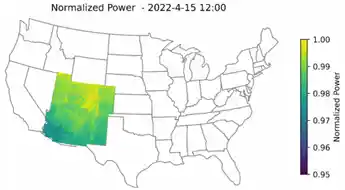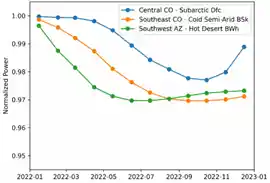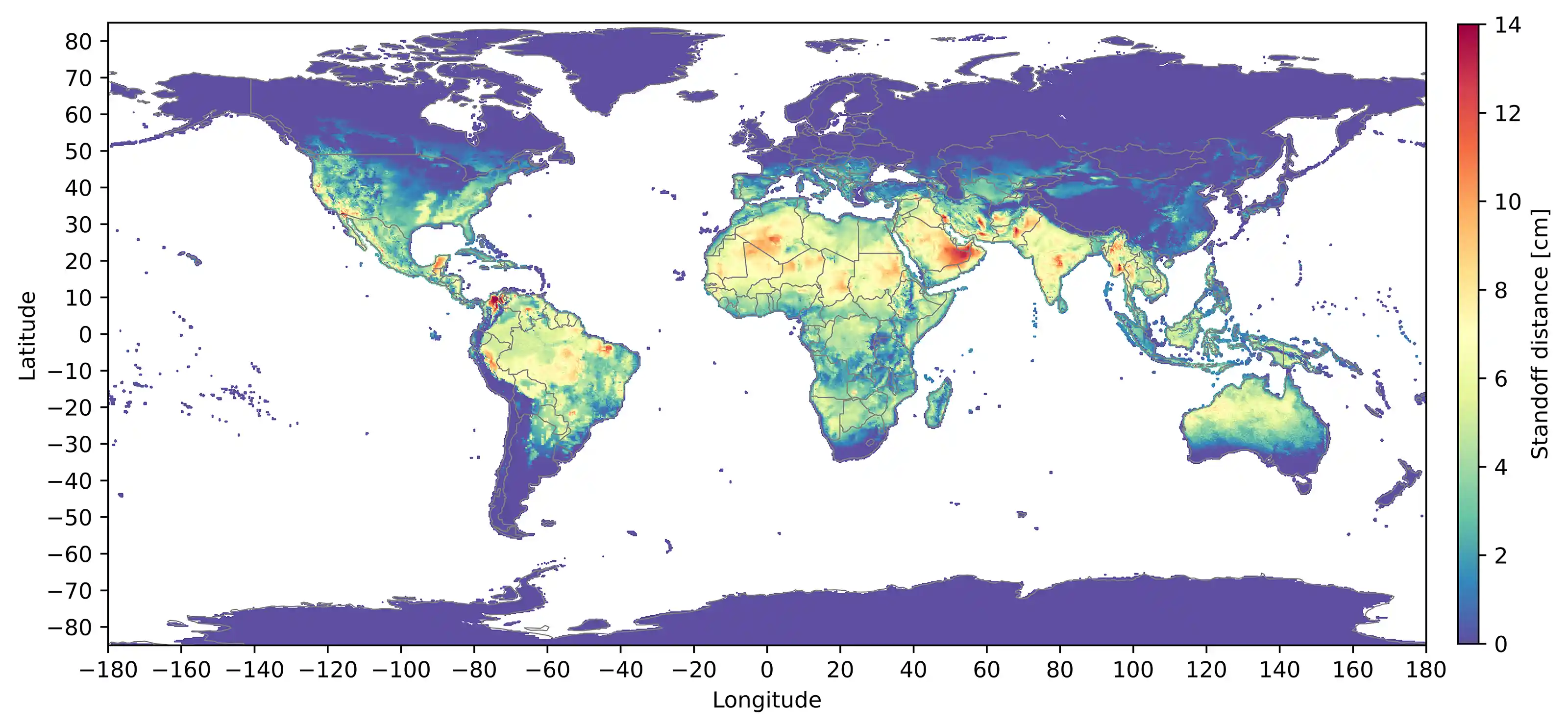Industry-Facing PV Degradation Prediction Tool and Degradation Database To Enable a 50-Year Module
DuraMAT created an open-source Python software package for running photovoltaic (PV) degradation calculations that includes a library of degradation parameters and material properties.
This is enabling better calculations by eliminating the need to program repetitive aspects so that researchers only need to supply the characteristics that are unique to their model.
Many researchers perform accelerated stress tests but do not have convenient ways to visualize the equivalence to the outdoor environment. Often, researchers will at best pick a set of average environmental parameters or run calculations for one or a few sites of interest. With this software package, engineers and researchers can run high-fidelity calculations where the gathering of meteorological data and estimation of module stress factors are automated. This enables them to put all their design and research effort into obtaining and using good degradation parameters that will inform lifetime models and improve module architecture and durability.
Field performance is often used to improve or develop accelerated stress testing protocols that will detect weaknesses before the modules are manufactured and deployed. This involves looking at past field failures and running degradation simulations on existing tests to determine whether the failure could be caught by existing or new tests. To help with this, we have created a degradation parameter database relevant to PV applications. This will enable users to find degradation modes and failure mechanisms that are similar to the ones of interest and to estimate a range of possible outdoor equivalents with some understanding of the associated uncertainty.
Core Objective
Multi-Scale, Multi-Physics Model
Team Members
Michael Kempe, Silvana Ovaitt, Martin Springer, Tobin Ford, and Aidan Wesley at the National Renewable Energy Laboratory (NREL)
Impact
The key obstacle to creating a 50-year module is not necessarily the need for new technological developments, but rather the need to determine how and when a current design will fail. This project will simplify the process for predicting field performance by automating the aspects of laboratory-to-field extrapolation that are common reliability research activities. With this in place, engineers and researchers can focus on collecting data, mining the data that is already available, and developing better testing methods.
Learn More
These resources are available to NREL scientists and external collaborators.
Publications
Kempe, Michael, Silvana Ovaitt, Martin Springer, Tobin Ford, and Joe Karas. 2024. “The ‘PVLib’ of Degradation: PVDeg.” Presented at the 2024 PV Performance Modeling Workshop, Salt Lake City, Utah, May 8, 2024..
Springer, Martin, Silvana Ovaitt, Matthew Brown, Joe Karas, and Michael Kempe. 2023. “Pvdeg - Advanced Degradation Prediction Tool and Database.” Presented at the 2023 NIST/UL Solutions Workshop on Photovoltaic Materials Durability, Northbrook, Illinois.
Kempe, Michael, Silvana Ovaitt, Martin Springer, Matthew Brown, Tobin Ford, and Joe Karas. 2024. “PVDeg: Development of a Streamlined Tool for PV Degradation Modeling.” Poster presented at the 2024 Photovoltaic Module Reliability Workshop, Lakewood, Colorado, February 27–29, 2024. NREL/PO-5K00-88800.
Karas, Joe, Martin Springer, Michael Kempe, Silvana Ovaitt, and Ingrid Repins. 2024. “Energy Yield Loss Due to LETID: An Open-Source Tool To Model LETID-Related Energy Loss.” Presented at SiliconPV 2024, Chambery, France, April 15, 2024.
Kempe, Michael, Silvana Ovaitt, Martin Springer, and Matthew Brown. 2023. “Industry Facing PV Degradation Prediction Tool and Database to Enable a 50 Year Life Module.” Poster presented at the 2023 Photovoltaic Reliability Workshop, Lakewood, Colorado, February 28– March 2, 2023. NREL/PO-5K00-85701.
Tools
Edge Seal Oxygen Ingress Calculator Tool (GitHub)
PVDeg Tutorials and Tools (GitHub)
Tools - Module Standoff for IEC TS 63126 (GitHub)
Contact
To learn more about this project, contact Michael Kempe, NREL.


Geospatial analysis of the progression of light- and elevated temperature-induced degradation and recovery. Image from Repins, Ingrid et al. 2023. “Long-Term Impact of Light- and Elevated Temperature-Induced Degradation on Photovoltaic Arrays.” MRS Bulletin 48: 589–601.

Estimation of minimum required standoff distance for a PV module to have a 98th percentile temperature less than 70°C. This is used for evaluating the need for compliance with IEC TS 63126. Image from Tools - Module Standoff for IEC TS 63126 (GitHub)